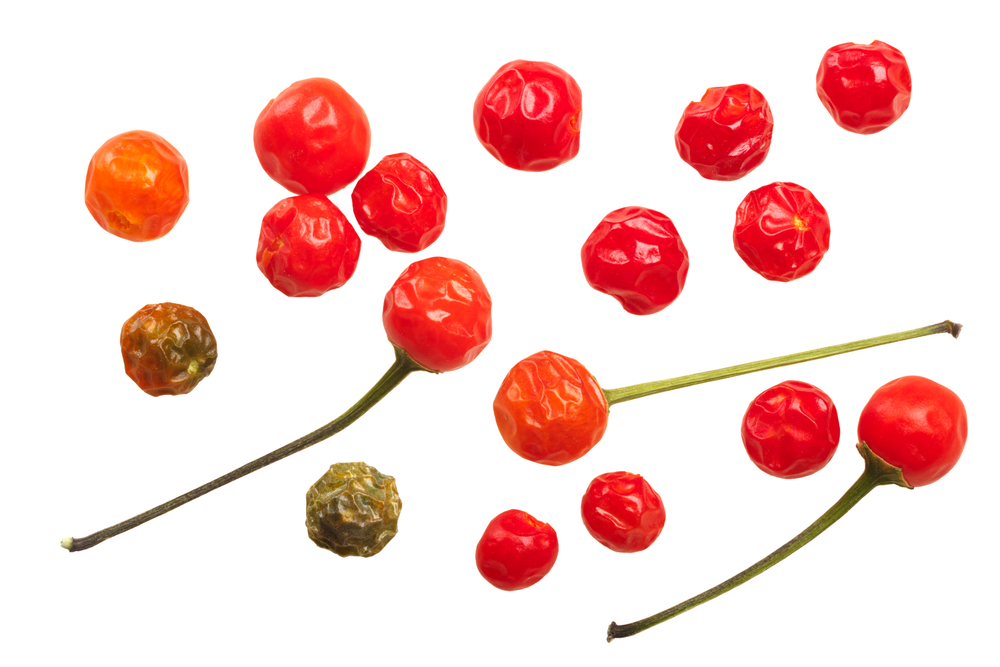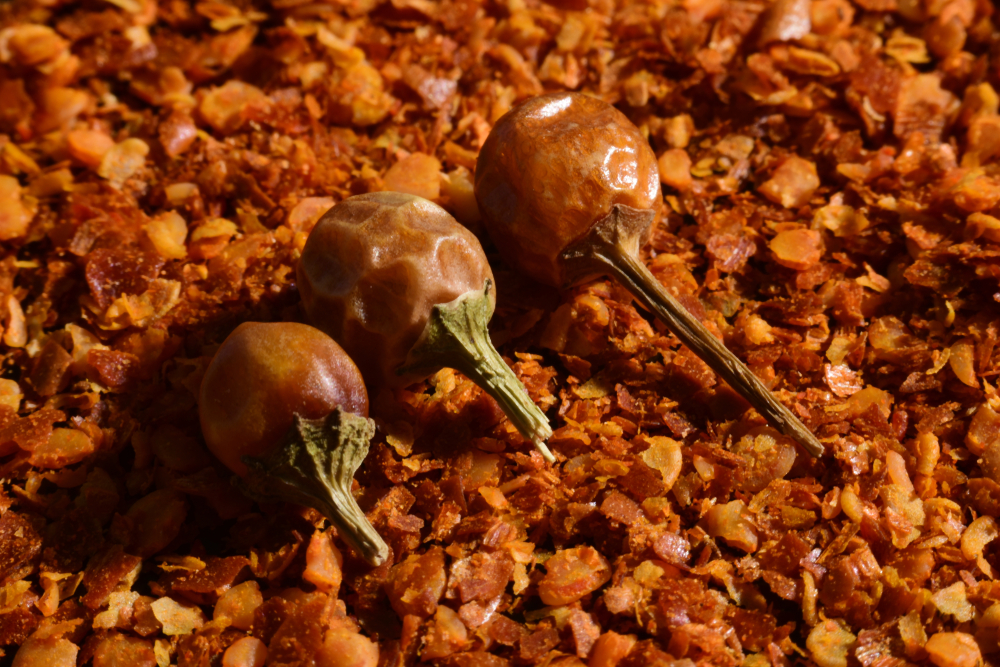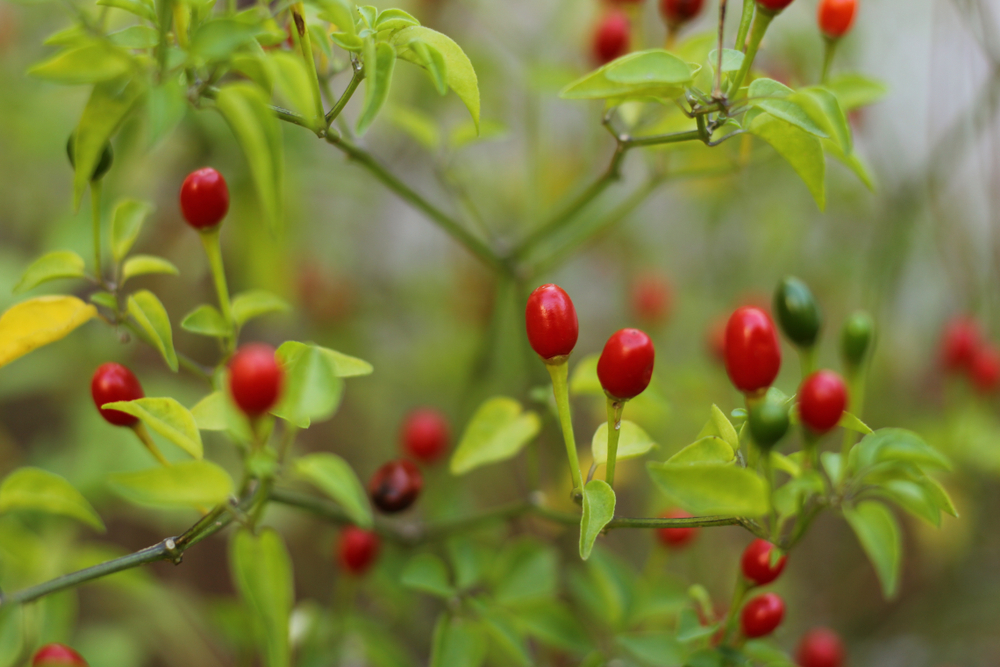The chiltepin pepper is a tiny chili pepper native to Mexico and the southern United States. Sometimes referred to in the U.S. as, "The Mother of All Peppers," the chiltepin pepper is about 20 times hotter than a jalapeno.
What Is A Chiltepin Pepper?
Chiltepin peppers, also known as “chile tepin,” are often considered “The Mother of All Peppers” due to their genetic origins being traced back for generations in North America.
Few peppers in North America have as rich of a history as chiltepin peppers. Chiltepins have been coveted for their incredible spiciness for generations and are one of the most cherished peppers in Central Mexican cuisine. Dried chiltepins are essential in many spice cabinets throughout the Southwest.
It’s believed that chiltepins were first fully domesticated nearly 7,000 years ago in Mexico. The word “chiltepin” directly translates to “small pepper” from the ancient Aztec civilization’s words “chili” and “tepin.” Chiltepins are also celebrated in the United States, named the official state native pepper of Texas in 1997.
Chiltepins are famously small; averaging around 0.7-1.0 centimeters in diameter; they are about the size and shape of an average blueberry. They start a bright green color and slowly change to a beautiful red as they ripen.
Once perfectly ripe, chiltepins are harvested and sun-dried for their flavor to mature before being used for cooking. Even fresh off the vine, they are prized for their extreme spiciness. You’ll want to snack on them at your own risk!

How Hot Are Chiltepin Peppers?
Tiny and mighty, chiltepins pack a massive punch in terms of heat, clocking in at 50,000-100,000 Scoville heat units (SHU)!
Comparing this to a jalapeno pepper, usually around 2,500-8,000 SHU, chiltepins are about 20 times hotter.
Some peppers with a similar heat level include the Indian Byadgi chili, Thai chilis, and the Brazilian Malagueta. All of these peppers are in the Capsicum annuum species and find similar culinary applications, popular in hot sauces due to their bright colors and high levels of capsaicin.
Another pepper that is often confused with chiltepin is the pequin pepper. Tepin and Pequin not only sound the same but also look quite similar.
The easiest way to tell them apart is that pequins are slightly more elongated and can grow up to an inch in length. Pequins are also milder when compared to tepin peppers, averaging 40,000-60,000 SHUs on the Scoville scale.
Why Are Chiltepins Called Bird’s Eye Peppers?
Chiltepins earned the nickname bird’s eye, or bird peppers, from how they are consumed and spread by wild birds.
Because birds don’t have the chemoreceptors that give capsaicin that burning sensation, they happily eat the hot peppers and then naturally distribute the chiltepin seeds throughout the land in their droppings.
The name “bird’s eye” has been given to many peppers, such as the Thai chili, Peri-peri, Siling labuyo, and the chiltepin. They are all well known for their small sizes, vibrant colors, and incredible spiciness.
Where To Buy Chiltepin Peppers
Chiltepins are native to both the Southwestern United States and Central Mexico, so they are most accessible for purchase in those regions. Local grocery stores, farmers’ markets, and plant nurseries are the best places to find chiltepins to use and grow in your home.
However, it is also possible to buy seeds and dried chiltepins from various online sellers. One of the most popular online retailers of chiltepins is Chilttepica, a company based in Arizona that grows and sells a wide variety of chile pepper products. The Sonoran Desert in Arizona makes for a perfect climate for chiltepins to thrive.
Can You Grow Chiltepin Peppers?
Like most other pepper plants commonly found in the Americas, chiltepins can easily be grown in your home or garden.
Since chiltepins have been grown and bred domestically for hundreds of years, they are prolific cultivars that remain hardy in most growing regions.
The chiltepin plant grows in sandy and silty soils, so you may want to consider turning in sand or fine gravel into the part of your veggie bed where you plan to plant chiltepins. Adding small amounts of cactus soil to your veggie base soil is also an excellent option to help keep the soil dry.
Chiltepins may require partial shading to survive in incredibly hot or arid regions, such as deserts throughout the Southwestern United States.
How To Use Chiltepin Peppers In Cooking
Fresh chiltepins are fantastic for various simple condiments, like hot sauce and salsa. Dried chiltepins offer a wider use of applications in cooking, as their flavor is much more complex and will add much more nuance to a dish.
If you can handle the heat, you can use them in place of the jalapenos in a brilliant fresh salad known as escabeche. This simple recipe for Mexican pickled vegetables uses a brine with carrots, red onions and garlic to make a refreshing and tangy condiment for soups and salads.
Crushing dried chiltepins into a fine-grain powder is the best way to add small quantities of this potent pepper to just about any dish. From being incorporated into marinades for meats and fish to being blended into spice mixes for soups and stews, dried chiltepins are one of the most versatile peppers in the kitchen.

A Thai chili is a suitable substitute if you cannot get your hands on chiltepins for a particular recipe. As mentioned previously, they have the same estimated 50,000-100,000 SHU and are similarly utilized in cooking when dried.
Even though they’re the perfect size to just pop in your mouth, the chiltepin’s incredible heat can make eating them raw an uncomfortable experience. However, that same intense spiciness makes the chiltepin a staple ingredient in traditional Mexican cuisine.
How To Dry Chiltepin Peppers
When dried, chiltepins gain an incredible smoky flavor that evolves into a subtle earthiness underneath a potent heat level.
Fortunately, drying chili peppers is an easy process that doesn’t require you to own a dehydrator. The two primary ways of drying chiltepins are in the open air or baking them in the oven at low temperatures.
When air drying, you’ll want to thread the chiltepins by their vine on a string and place them in a well-ventilated spot with lots of sunlight. If the peppers are placed in a damp, dark area, they will likely begin to rot.
Baking peppers in the oven is the best way to ensure they fully dry out and won’t start to mold. Place your peppers on a baking sheet in an oven set to 125°F-150°F. Regularly check them in 30-minute intervals and remove peppers that are dried thoroughly. Depending on the size of your peppers, this process should only take about 2 hours for your peppers to completely dry.
Once you’ve dried your chiltepins, you’ll want to store them in a jar or other airtight container in your pantry, which will usually last for up to a year.

